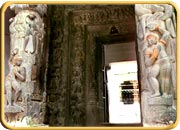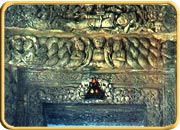Wednesday, 24 February 2016
|
 In
1854, when the province of Nagpur lapsed to the British government, Chhattisgarh
was formed into a deputy commissionership with its headquarters at Raipur. Historian
C.W. Wills, writing about Chhattisgarh says, Chhattisgarh presents the remarkable
picture of a Hindu government continuing till modern times outside the sphere
of direct Mohammedancontrol. The British made certain changes in the administrative
and revenue systems of Chhattisgarh, which adversely affected the people of
Chhattisgarh. The intrusion of the British was resisted strongly in Bastar by
the tribals and the Halba rebellion which lasted nearly five year (1774-1779)
was the first documented rebellion against the British and Marathas in Bastar.
The First war of independence in 1857 was spearheaded in Chhattisgarh by Vir
Narain Singh who was a benevolent jamindar of Sonakhan. The British arrested
him in 1856 for looting a trader's grain stocks and distributing it amongst
the poor in a severe famine year. In 1857 with the help of the solders of the
British Army at Raipur, Vir Narain Singh escaped form prison. He reached Sonakhan
and formed an army of 500 men. Under the leadership of Smith, a powerful British
army was dispatched to crush the Sonakhan army. The British succeeded after
a prolonged battle and Vir Narain Singh was arrested and later hanged on the
10th December, 1857. He became the first martyr from Chhattisgarh in the War
of Independence. Vir Narain Singh's martyrdom has been resurrected in the 1980's
and he has become a potent symbol of Chhattisgarhi pride.
In
1854, when the province of Nagpur lapsed to the British government, Chhattisgarh
was formed into a deputy commissionership with its headquarters at Raipur. Historian
C.W. Wills, writing about Chhattisgarh says, Chhattisgarh presents the remarkable
picture of a Hindu government continuing till modern times outside the sphere
of direct Mohammedancontrol. The British made certain changes in the administrative
and revenue systems of Chhattisgarh, which adversely affected the people of
Chhattisgarh. The intrusion of the British was resisted strongly in Bastar by
the tribals and the Halba rebellion which lasted nearly five year (1774-1779)
was the first documented rebellion against the British and Marathas in Bastar.
The First war of independence in 1857 was spearheaded in Chhattisgarh by Vir
Narain Singh who was a benevolent jamindar of Sonakhan. The British arrested
him in 1856 for looting a trader's grain stocks and distributing it amongst
the poor in a severe famine year. In 1857 with the help of the solders of the
British Army at Raipur, Vir Narain Singh escaped form prison. He reached Sonakhan
and formed an army of 500 men. Under the leadership of Smith, a powerful British
army was dispatched to crush the Sonakhan army. The British succeeded after
a prolonged battle and Vir Narain Singh was arrested and later hanged on the
10th December, 1857. He became the first martyr from Chhattisgarh in the War
of Independence. Vir Narain Singh's martyrdom has been resurrected in the 1980's
and he has become a potent symbol of Chhattisgarhi pride.
|
|
||||